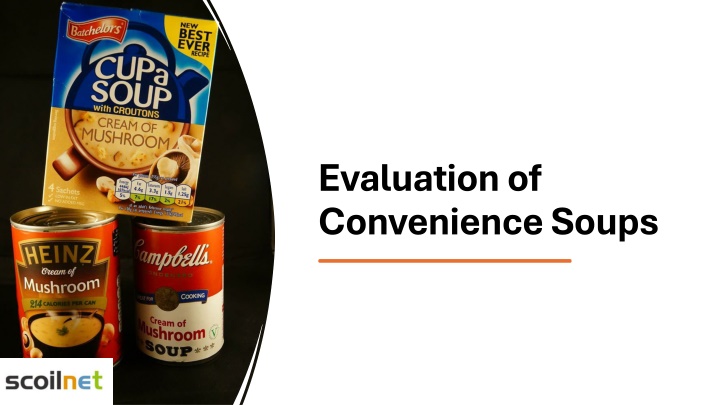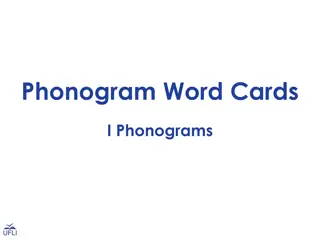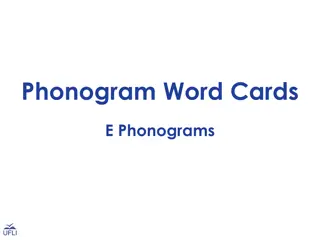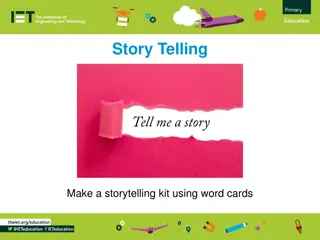New Collaborative Features in Word
Learn about five innovative ways to collaborate in Word, enabling seamless document sharing and real-time editing, along with cloud storage and easy file sharing capabilities. Explore features like co-authoring, cloud saving, content listening, translation, dictation, and proofreading to enhance your productivity.
Download Presentation

Please find below an Image/Link to download the presentation.
The content on the website is provided AS IS for your information and personal use only. It may not be sold, licensed, or shared on other websites without obtaining consent from the author.If you encounter any issues during the download, it is possible that the publisher has removed the file from their server.
You are allowed to download the files provided on this website for personal or commercial use, subject to the condition that they are used lawfully. All files are the property of their respective owners.
The content on the website is provided AS IS for your information and personal use only. It may not be sold, licensed, or shared on other websites without obtaining consent from the author.
E N D
Presentation Transcript
Evaluation of Convenience Soups
Learning intentions: Be able to differentiate between types of convenience soups Evaluate convenience soups in terms of sensory and nutritional value
Types of convenience soups: Cartons and tubs of cook-chill soup Dried, packet and instant Tinned
Cookery class for tasting and evaluating convenience soups: Each student/pair to bring a different type of soup: 1.Vegetable: Dried, packet and instant 2.Vegetable: Tinned 3.Vegetable: Carton/tub of cook-chill soup 4.Tomato: Dried, packet and instant 5.Tomato: Tinned 6.Tomato: Carton/tub of cook-chill soup 7.Mushroom: Dried, packet and instant 8.Mushroom: Tinned 9.Mushroom: Cartons/tub of cook-chill soup 10.Chicken & Vegetable: any type
Medium saucepan & lid Wooden spoon Equipment needed for tasting of convenience soups: Plate for spoon Soup ladle Spatula 2 cups/small bowls for tasting 2 soup/dessert spoons for tasting
When soup is ready, keep on hob on low heat with lid on to keep warm Read and follow the instructions on your convenience soup Method for making soup: Place a ladle on plate beside the hob
Tasting: In pairs you have 2 minutes to taste each soup and fill in the sensory part of the evaluation sheet. Use the word bank to help you. Bring your cup/bowl and spoon and reuse it for each type of soup When the timer buzzes, finish up and move on to the next type of soup
Brand name: Flavour: Method of processing: Colour: Flavour: Texture: Calories (kcal) per 100g: Protein per 100g: Sugar per 100g: Saturated fat per 100g: Salt per 100g: e.g. tinned, dried, chilled
Sensory Evaluation of soup: Word bank Appearance: Clear Opaque Golden Murky Vibrant Rich Flavour: Savoury Umami Spicy Mild Tangy Earthy Herbaceous Smoky Salty Sweet Texture: Creamy Velvety Chunky Brothy Smooth Thick Gritty Silky Hearty Viscous
Reading nutritional information: Per 100g is best to use to compare foods of different quantities Energy: kcal is the measurement of energy used in Ireland Ensure to use decimal points and units (e.g. grams) when recording information to ensure accuracy
Brand name: Flavour: Method of processing: Colour: Flavour: Texture: Calories (kcal) per 100g: Protein per 100g: Sugar per 100g: Saturated fat per 100g: Salt per 100g: e.g. tinned, dried, chilled
Nutritional Evaluation of Convenience Soups Use the Evaluation form to fill in the nutritional information for each type of soup. You will have 3 minutes for each soup. When the timer stops, move on to the next type of soup.
Further evaluation: Calories, Protein, Sugar, Saturated fat, Salt: circle or highlight the highest and lowest in each column Brand name: Flavour: Method of processing: Colour: Flavour: Texture: Calories (kcal) per 100g: Protein per 100g: Sugar per 100g: Saturated fat per 100g: Salt per 100g: e.g. tinned, dried, chilled
1. Which type of soup is the best in terms of calories? Why should you aim to consume low calories? 1. Heinz Chicken Broth is the lowest in calories at 34kcal per 100g. Low calories means... 2. Which type of soup is highest in saturated fat? Why should you avoid excess saturated fat in the diet? 3. Which type of soup is highest in sugar? Why should you avoid excess sugar in the diet? 4. Which type of soup is highest in salt? Why should you avoid excess salt in the diet? Analysis of soups: Answer the following questions in relation to the nutritional evaluation of soup. One example is provided
1. Which type of soup did you like the most in terms of colour, flavour and texture? 2. Which type of soup did you like the least in terms of colour, flavour and texture? 3. Which type of soup would you recommend in terms of nutritional value? Overall analysis:
List 2 advantages and 2 disadvantages of each of the following types of soup: Dried, packet and instant: Tinned: Cartons and tubs of cook-chill soup: Convenience soups: Advantages & Disadvantages Use the following clues to help you: Where does this type of soup need to be stored? Which type of soup is best in terms of flavour? Which type of soup is best in terms of nutritional value?
Learning intentions: Be able to differentiate between types of convenience soups Evaluate convenience soups in terms of sensory and nutritional value























